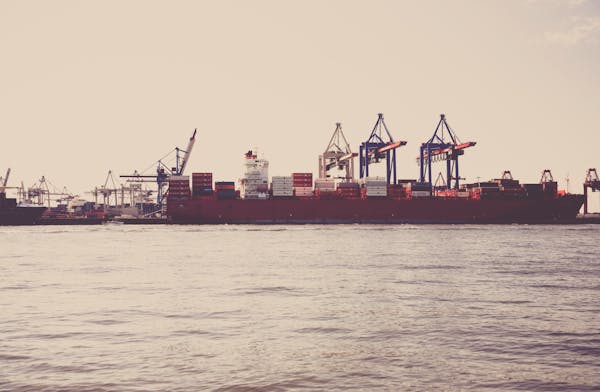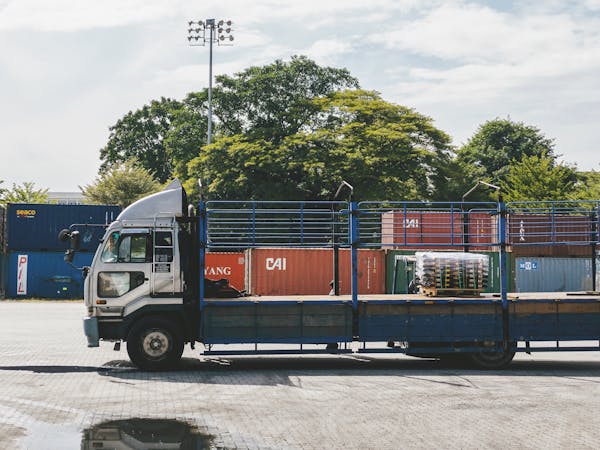Shipping Meat Processing Equipment from Guangzhou/Shenzhen to Napier Port, New Zealand: A Complete Guide for 20FT/40FT FCL and LCL Ocean Freight
1. Shipping Options: FCL and LCL
Full Container Load (FCL)
For larger shipments, opting for a Full Container Load (FCL) is often the most cost-effective and secure choice. FCL means that the entire container (20FT or 40FT) will be filled with your meat processing equipment, which ensures a direct route with no shared space. This option is ideal when you have enough cargo to fill the container, reducing the risk of damage during transit.
- 20FT Container: Suitable for smaller shipments or when your equipment requires less space.
- 40FT Container: Ideal for larger shipments, offering more space for bulky equipment.
The ocean freight transit time for a 20FT or 40FT container from Guangzhou/Shenzhen to Napier Port is typically around 23 days depending on the shipping line and weather conditions.
Less than Container Load (LCL)
If your shipment doesn’t require a full container, opting for LCL (Less than Container Load) is a viable alternative. With LCL, your equipment will share space with other shipments, making it a more economical choice for smaller loads. However, the goods will be handled multiple times, which may increase the risk of damage. To mitigate this, it’s important to use high-quality packaging and ensure the equipment is securely packed.
LCL shipments also generally take a bit longer, but the estimated transit time remains similar to that of FCL, around 23 days.

2. CIF Shipping Terms
Both FCL and LCL shipments can be arranged under CIF (Cost, Insurance, and Freight) terms. This means the shipping company will cover the cost of transportation, insurance, and freight charges to the port of Napier, New Zealand. However, the buyer will be responsible for import duties, customs clearance, and delivery to the final destination in New Zealand.
3. Packaging of Meat Processing Equipment
Proper packaging is crucial when shipping delicate and bulky machinery like meat processing equipment. The packaging serves not only to protect the items from physical damage but also to comply with international shipping regulations.
Step-by-Step Packaging Guide:
- Wooden Crates: Large, heavy machinery such as meat processing equipment should be placed inside custom-made wooden crates. These crates provide solid protection against physical shocks during transit. The wood used should comply with international standards to prevent the spread of pests (ISPM 15 compliance).
- Plastic Wrapping: Equipment should be securely wrapped in plastic shrink wrap to prevent moisture damage during the journey. The wrap also helps hold smaller parts in place.
- Foam Padding: For added protection, foam or bubble wrap can be used to cushion the equipment inside the wooden crates, especially for sensitive parts like motors or controllers.
- Metal Straps: Once the equipment is inside the crate, metal straps should be used to secure the machinery in place. This prevents any shifting during transit, which could cause damage.
- Sealing and Labeling: Proper sealing of the crates is important to ensure that no dirt or contaminants enter. Additionally, crates should be clearly labeled with the contents and destination to facilitate customs clearance at Napier Port.
- Waterproofing: Given the long journey and potential exposure to humidity or rain, consider waterproof packaging for any exposed parts. Silica gel packets can be included inside the crates to absorb moisture and prevent rusting.

4. Ocean Freight Route and Duration
The ocean freight journey from Guangzhou/Shenzhen to Napier Port typically takes 23 days, but this can vary depending on weather conditions and the specific shipping route. The container will pass through major transshipment hubs before reaching New Zealand. As the goods will travel via sea, be sure to account for additional time for loading, unloading, and potential port delays.
5. Customs Clearance and Delivery in New Zealand
Upon arrival at Napier Port, New Zealand, the cargo will go through customs clearance. The CIF term ensures that shipping costs and insurance are covered, but you’ll still need to handle any import duties or taxes associated with the equipment. Ensure you have all necessary documents, including the bill of lading, invoice, and packing list, to smooth the customs process.
Once cleared, the equipment can either be picked up directly at Napier Port or arranged for door-to-door delivery, depending on the logistics agreement.



